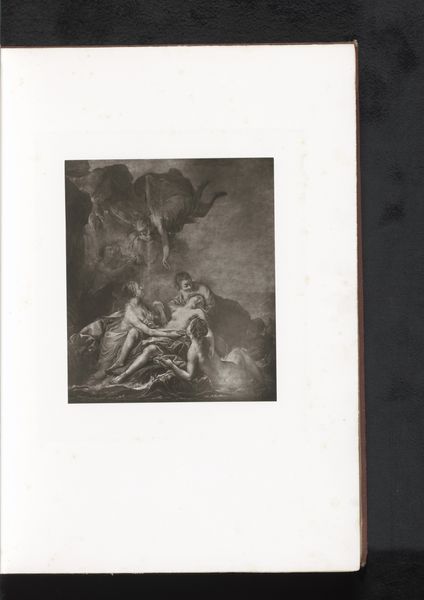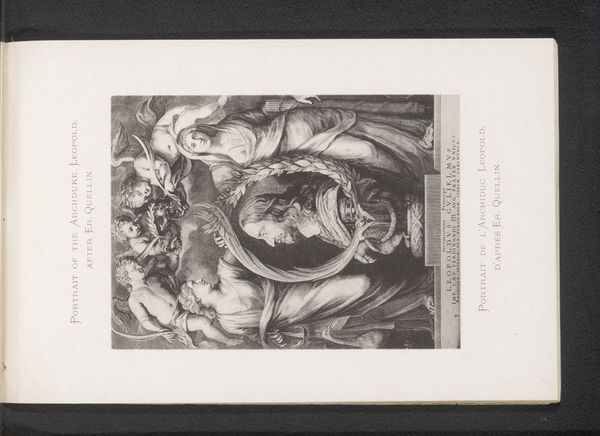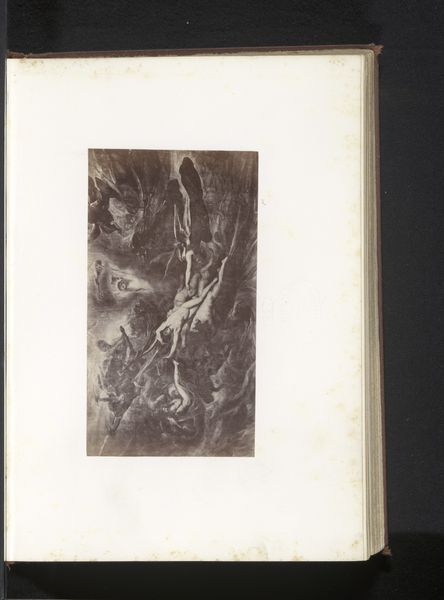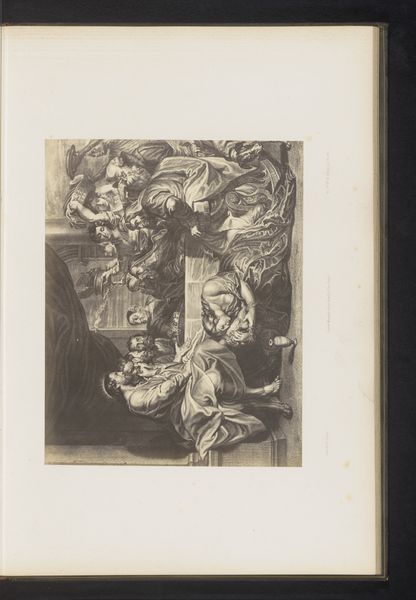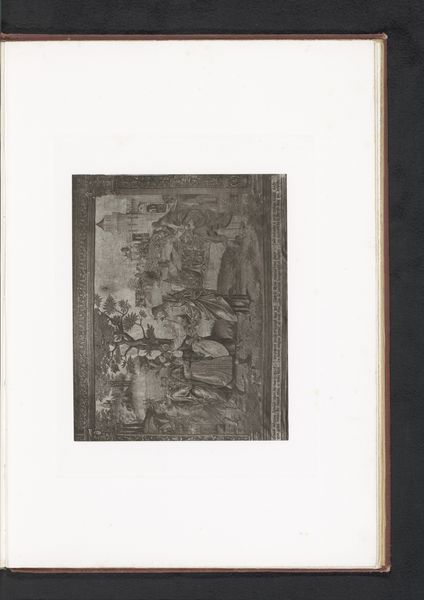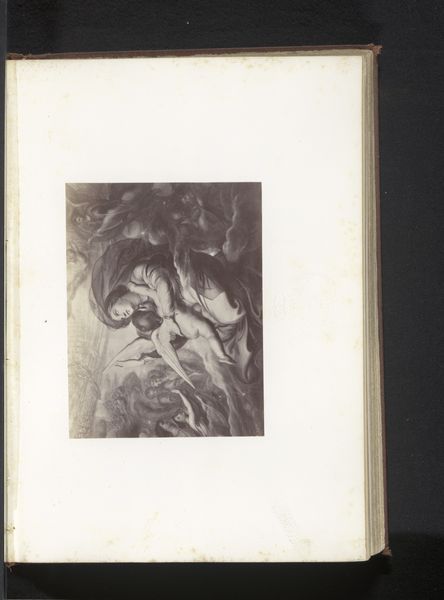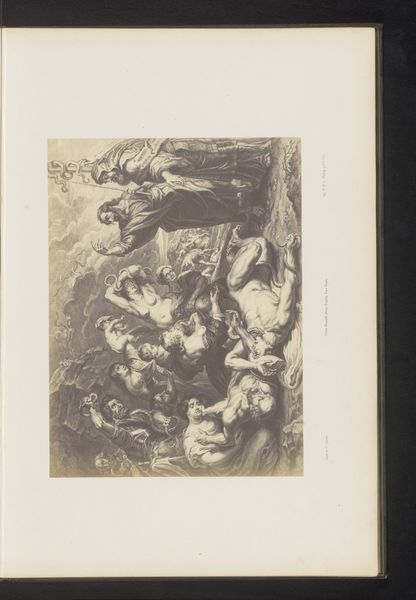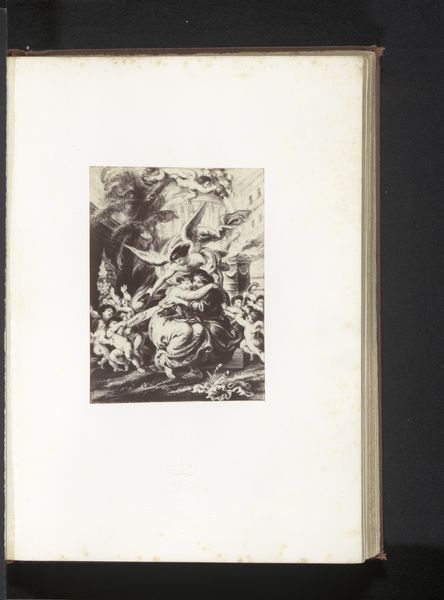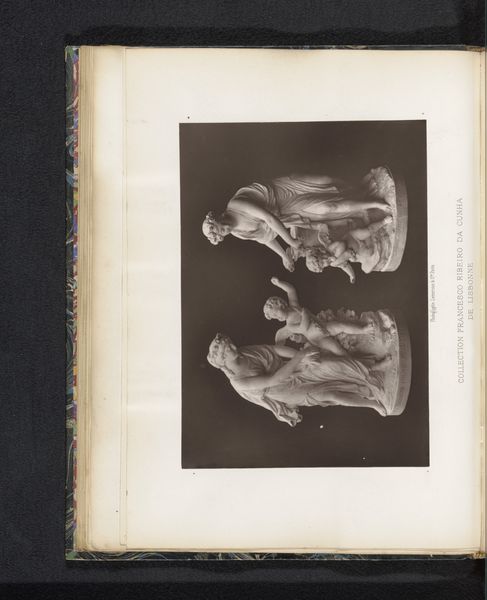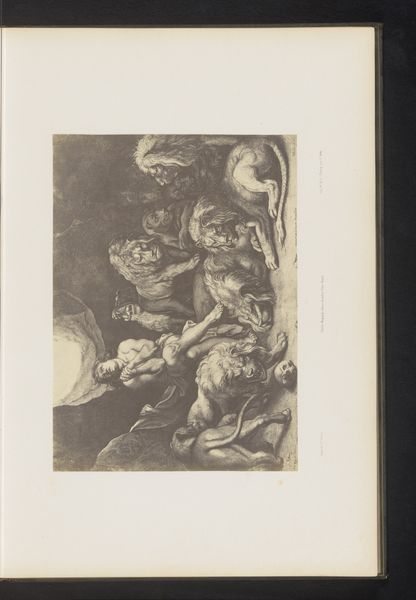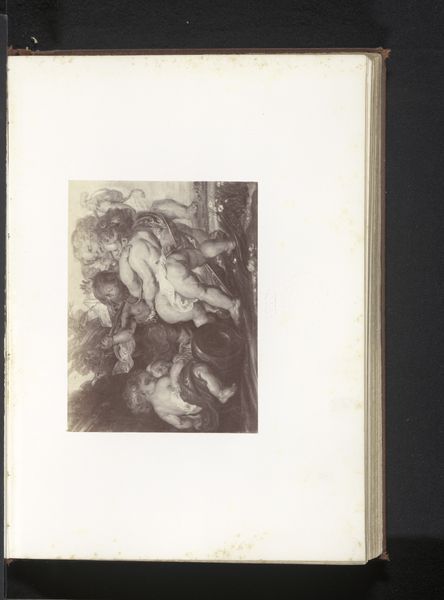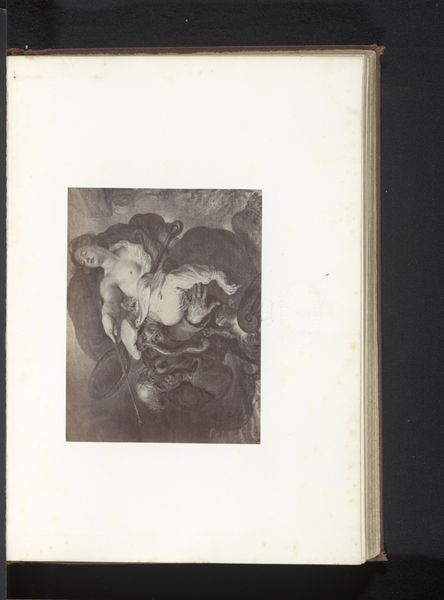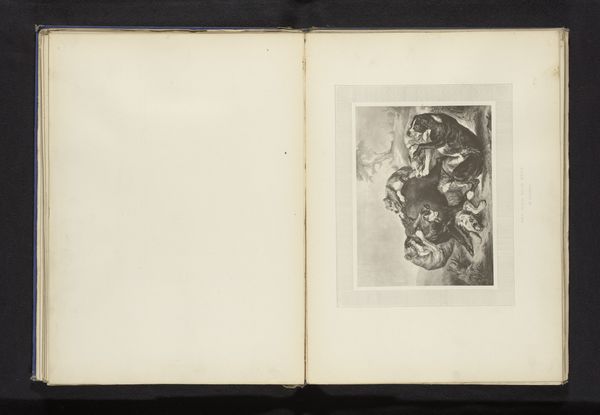
#
aged paper
#
script typography
#
paperlike
#
typeface
#
hand drawn type
#
personal journal design
#
folded paper
#
thick font
#
paper medium
#
design on paper
Dimensions: height 85 mm, width 117 mm
Copyright: Rijks Museum: Open Domain
Editor: This photogravure, "Reproduction of The Four Continents by Peter Paul Rubens," printed before 1899 by Josef Löwy, feels intensely allegorical. What strikes me is how densely populated and theatrical the composition is. How would you interpret this image? Curator: Note how Rubens assembles personifications of Europe, Asia, Africa, and America. Consider each figure and the elements associated with them. It’s a carefully constructed dance of power and exoticism. What stories do these symbols tell us about the cultural memory of the time? Editor: Well, Europe seems central, almost enthroned. Asia appears luxurious, and then Africa and America have figures accompanied by animals - the elephant and the alligator - it’s like charting them as existing primarily in relation to the natural world… Curator: Exactly. These animals don’t just signify those continents; they reflect European perceptions and biases. This image operates as a repository for projected fears and desires. Look at how the light falls – who is illuminated, and who remains in shadow? Editor: Ah, the asymmetry is revealing. It suggests a hierarchy – a specific narrative being constructed. This single image reflects the politics and psychological landscape of its time. Curator: Precisely! It's a stage upon which cultural identities are not just represented, but actively molded and enforced. Does observing this tell us more about 17th Century Europe or contemporary perspectives on these stereotypes? Editor: Perhaps both. Recognizing these symbols and their history gives us the vocabulary to unpack assumptions still present today. It's quite powerful. Curator: Indeed. Artworks like these are not just pretty pictures; they’re cultural touchstones that allow us to examine the layers of meaning we inherit and perpetuate.
Comments
No comments
Be the first to comment and join the conversation on the ultimate creative platform.
